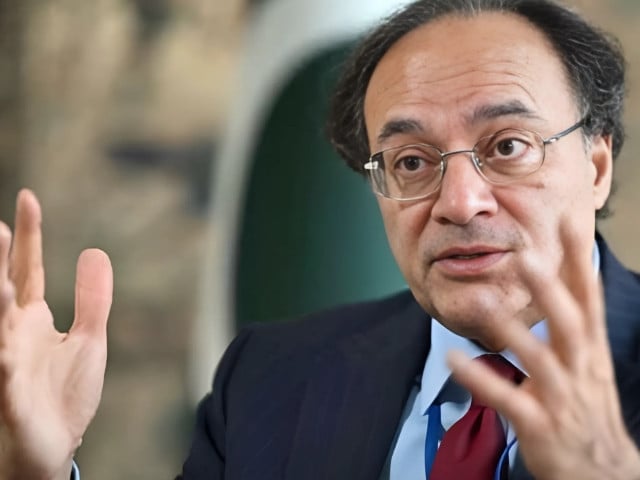In a recent statement, Aurangzeb addressed Pakistan’s economic challenges, highlighting that there is no “magic wand” to resolve the country’s ongoing financial struggles. As Pakistan navigates a period of economic turbulence, with inflation, high debt, and a declining currency value, his comments underscore the importance of sustainable solutions and long-term strategies to restore stability. Here’s a breakdown of what Aurangzeb had to say about Pakistan’s economy and the way forward.
The Current Economic Landscape
Pakistan’s economy is currently facing a myriad of challenges, from soaring inflation to foreign debt and a weak currency. These issues have been compounded by political instability, global economic downturns, and the effects of climate-related disasters. As Pakistan struggles with fiscal deficits and mounting external debts, many citizens and businesses are feeling the pinch.
Aurangzeb, a prominent figure in Pakistan’s financial sector, acknowledged the severity of the situation. However, he emphasized that there is no quick fix or “magic wand” that can suddenly resolve these deep-rooted issues. Instead, he called for comprehensive reforms and a focus on structural changes to help steer the economy toward a more stable and sustainable future.
No Quick Fix, Only Sustainable Solutions
Aurangzeb’s comments resonate with a growing consensus that Pakistan must adopt a long-term approach to address its economic problems. Rather than looking for immediate, superficial fixes, the government and policymakers need to focus on creating a resilient economic framework. Here’s how Aurangzeb believes Pakistan can achieve this:
- Fiscal Discipline and Reforms
One of the key areas that Aurangzeb pointed out is the need for fiscal discipline. Pakistan’s fiscal deficit has been a major source of economic instability. He stressed the importance of cutting wasteful spending, improving tax collection, and broadening the tax base to ensure sustainable public finances. Without these measures, Pakistan will continue to face difficulties in managing its debt and funding essential public services. - Revitalizing Exports and Industry
Aurangzeb also emphasized the importance of reviving Pakistan’s export sector. With a narrow export base, Pakistan’s economy remains vulnerable to external shocks. He proposed that the government should work on boosting industries such as textiles, agriculture, and technology to increase exports and reduce the trade deficit. Supporting local manufacturing and enhancing global competitiveness will be key to economic recovery. - Diversification of the Economy
Another critical point made by Aurangzeb is the need to diversify Pakistan’s economy. Currently, the economy is heavily reliant on a few sectors, including agriculture and textiles. Diversifying into technology, services, and renewable energy can help Pakistan weather global economic changes and create new growth opportunities. - Encouraging Investment
To facilitate growth, Aurangzeb highlighted the importance of creating an environment that attracts both domestic and foreign investment. This includes making structural reforms in the business environment, improving regulatory frameworks, and addressing issues such as corruption and bureaucratic red tape.
A Focus on Economic Stability
While acknowledging the challenges, Aurangzeb underscored that economic stability can only be achieved through hard work and strategic planning. He pointed out that there is no one-size-fits-all solution, and success will require coordinated efforts from both the government and the private sector.
He also stressed the importance of collaborating with international institutions such as the IMF and World Bank to secure necessary financial support. However, he made it clear that Pakistan should not be overly reliant on external loans and must strive for economic self-sufficiency in the long run.
Impact on Businesses and the General Public
For businesses, the economic uncertainty has led to rising costs, supply chain disruptions, and currency volatility. Despite these challenges, Aurangzeb urged the business community to adopt innovative practices, invest in technology, and work on improving operational efficiency to navigate the tough environment.
For the general public, inflation and the rising cost of living have made it increasingly difficult to manage day-to-day expenses. Aurangzeb suggested that policymakers need to introduce social safety nets to cushion the effects of economic reforms on the most vulnerable populations. This includes strengthening poverty alleviation programs and ensuring access to basic services.
Looking Ahead: A Path to Recovery
While the road to economic recovery is fraught with challenges, Aurangzeb’s comments offer a sense of direction. He concluded by reiterating that sustainable growth is possible, but it requires patience, a long-term perspective, and the collective efforts of all stakeholders, including the government, businesses, and the people of Pakistan.
Pakistan must focus on economic diversification, improving industrial output, and reforming the financial sector to create a more resilient and adaptable economy. Only through these comprehensive and forward-looking reforms can the country hope to address its ongoing economic challenges and emerge stronger in the years to come.
Conclusion
Aurangzeb’s comments provide a realistic outlook on Pakistan’s economic challenges. While there are no quick fixes, the path forward lies in sustainable reforms and a focus on long-term growth. By improving fiscal discipline, diversifying industries, and attracting investment, Pakistan can rebuild its economic foundation and create a more stable and prosperous future. The road ahead may be tough, but with the right strategies, Pakistan has the potential to overcome its economic hurdles and emerge stronger.



Comments (0)
No comments yet. Be the first to comment!
Leave a Comment